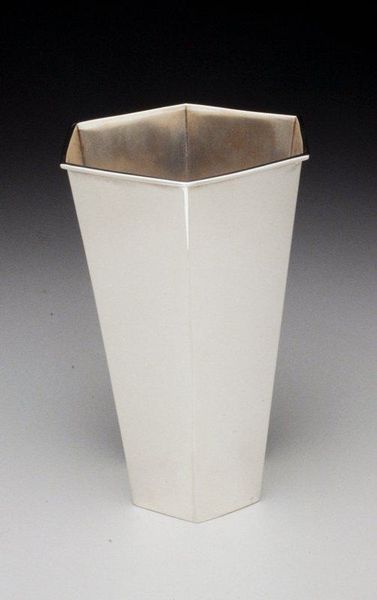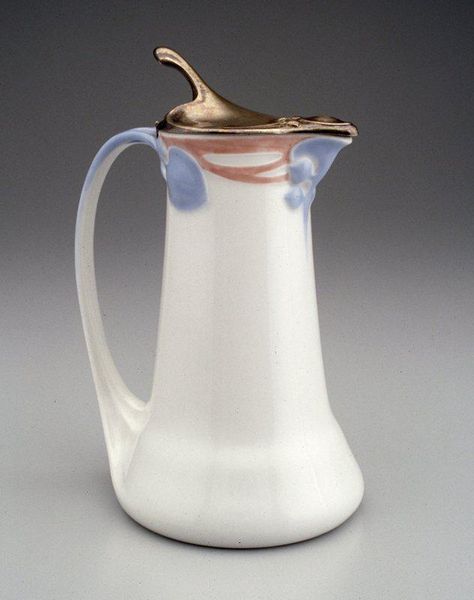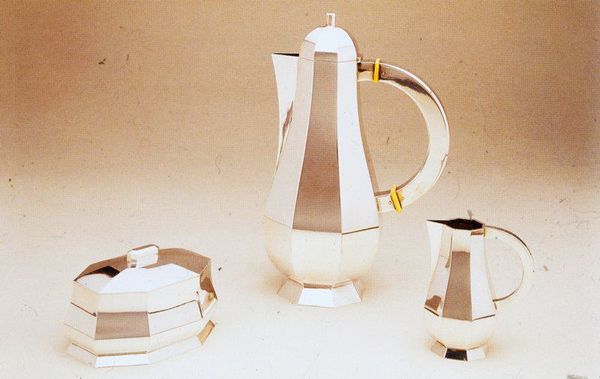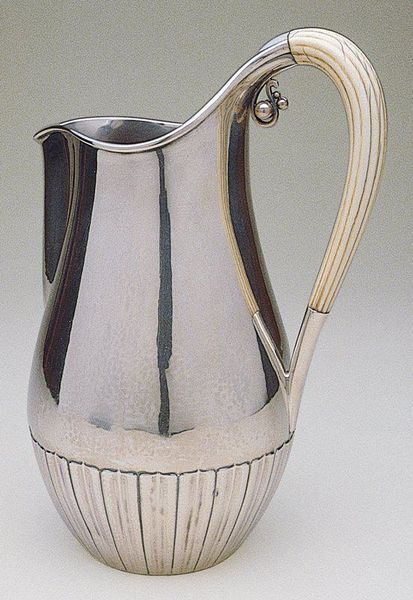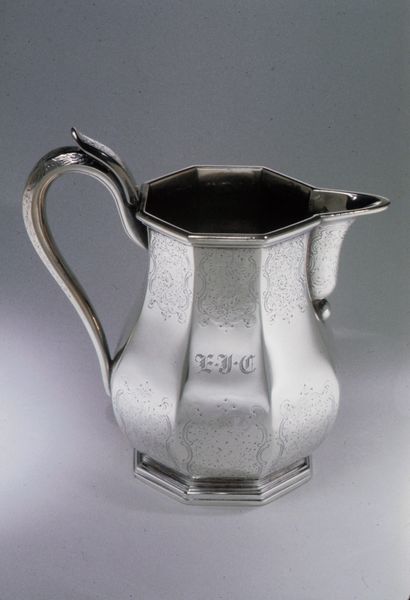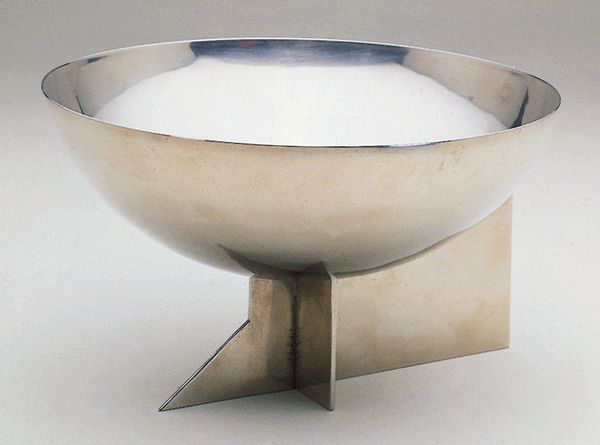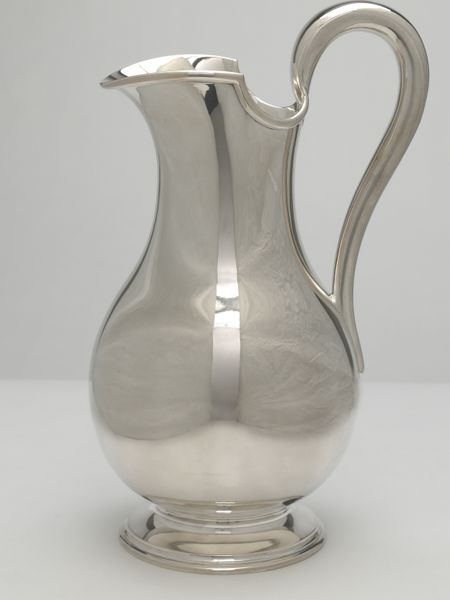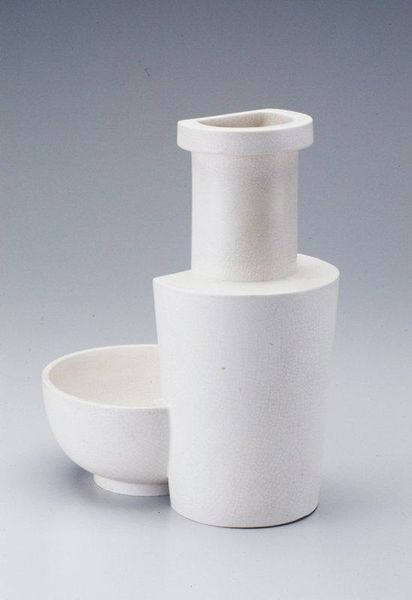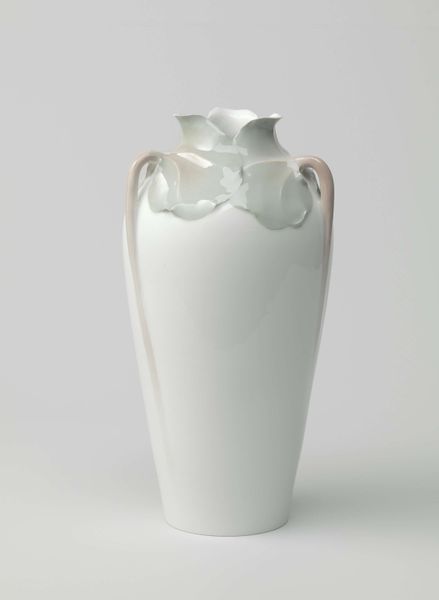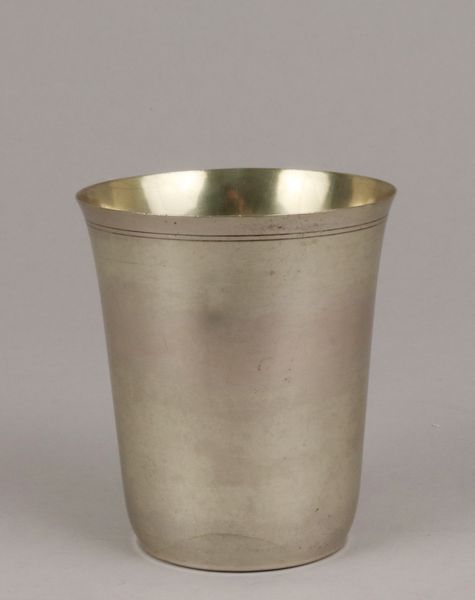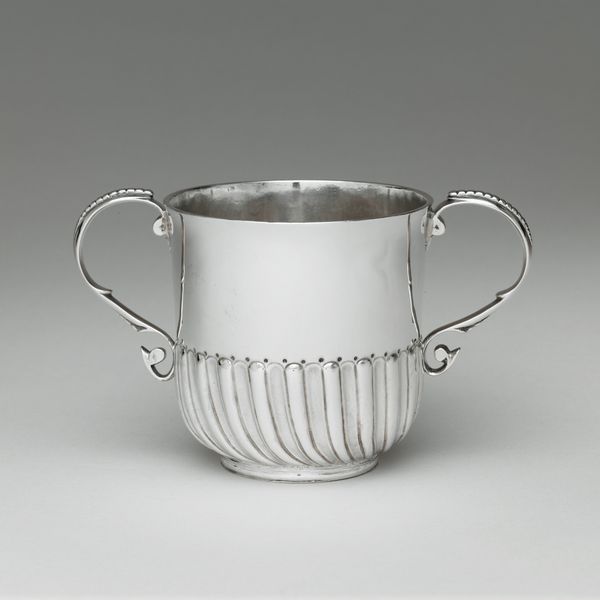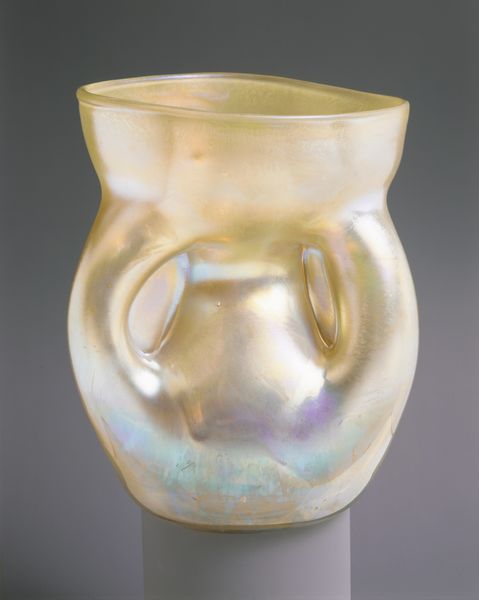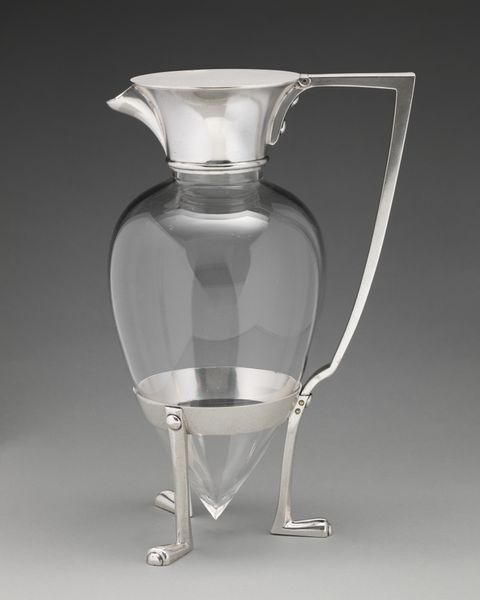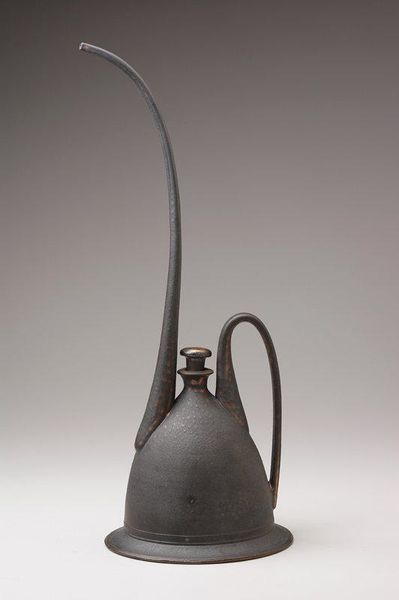
metal, sculpture
#
metal
#
sculpture
#
united-states
#
modernism
Dimensions: 8 x 10 1/4 in. (20.3 x 26 cm)
Copyright: No Known Copyright
Editor: This is "Pitcher", crafted in 1916 by Clara Barck Welles, residing here at the Minneapolis Institute of Art. It looks like a futuristic, shiny, silver… building. What am I missing? What strikes you about this piece? Curator: Oh, I adore this pitcher. It reminds me of a very chic robot butler, poised to serve the most refreshing beverage imaginable. Don't you think Welles has perfectly captured the spirit of early Modernism – a streamlining, a rejection of fussy ornamentation, and embrace of industrial forms. Are we seeing something revolutionary? Editor: Absolutely, I see that simplicity now. So different from those frilly Victorian things. Is this "form follows function" in action? Curator: Precisely! The sleek, geometric shapes certainly suggest that. But Welles isn't just after pure utility. It's got personality. Editor: What do you mean by “personality?” It’s so…clean. Curator: Think about the slight flare of the spout, the subtle angles playing with light. These soften what could have been sterile. Imagine her hammering the metal to shape it just so. Isn't there a hint of humanity peeking through all that polished silver? Editor: Okay, I get it. It’s like she's saying "Yes, I'm modern, but I'm still handcrafted, special." I’d never thought about metalwork having that kind of nuance. Curator: That's the magic of art, isn't it? To make you reconsider the familiar and find the unexpected. What have you learned looking deeply at “Pitcher”? Editor: I can definitely say that, as far as metal sculpture goes, the pitcher's definitely full!
Comments
minneapolisinstituteofart almost 2 years ago
⋮
Clara Barck, an early advocate of modernist design, established the Kalo workshop in 1900, shortly after graduating from the School of the Art Institute of Chicago. The shop first focused on handcrafted leatherwork and weaving, but increasingly concentrated on metalwork after Barck married George Welles, an amateur metalworker. Barck Welles oversaw the production of a wide range of handcrafted copper, brass, and silver household wares, and helped to establish the Kalo Shop as the leading producer of metalware in Chicago. The angular form and sleek, modern silhouette of this pitcher is offset by the irregular surface texture. The preservation of the hammered finish reinforces the handcrafted nature of the object. Barck Welles' pitcher represents the voice of the Arts and Crafts movement in an era of industrial production - one that rejected the impersonal nature of factory produced wares in favor of handmade objects created by talented artisans.
Join the conversation
Join millions of artists and users on Artera today and experience the ultimate creative platform.
